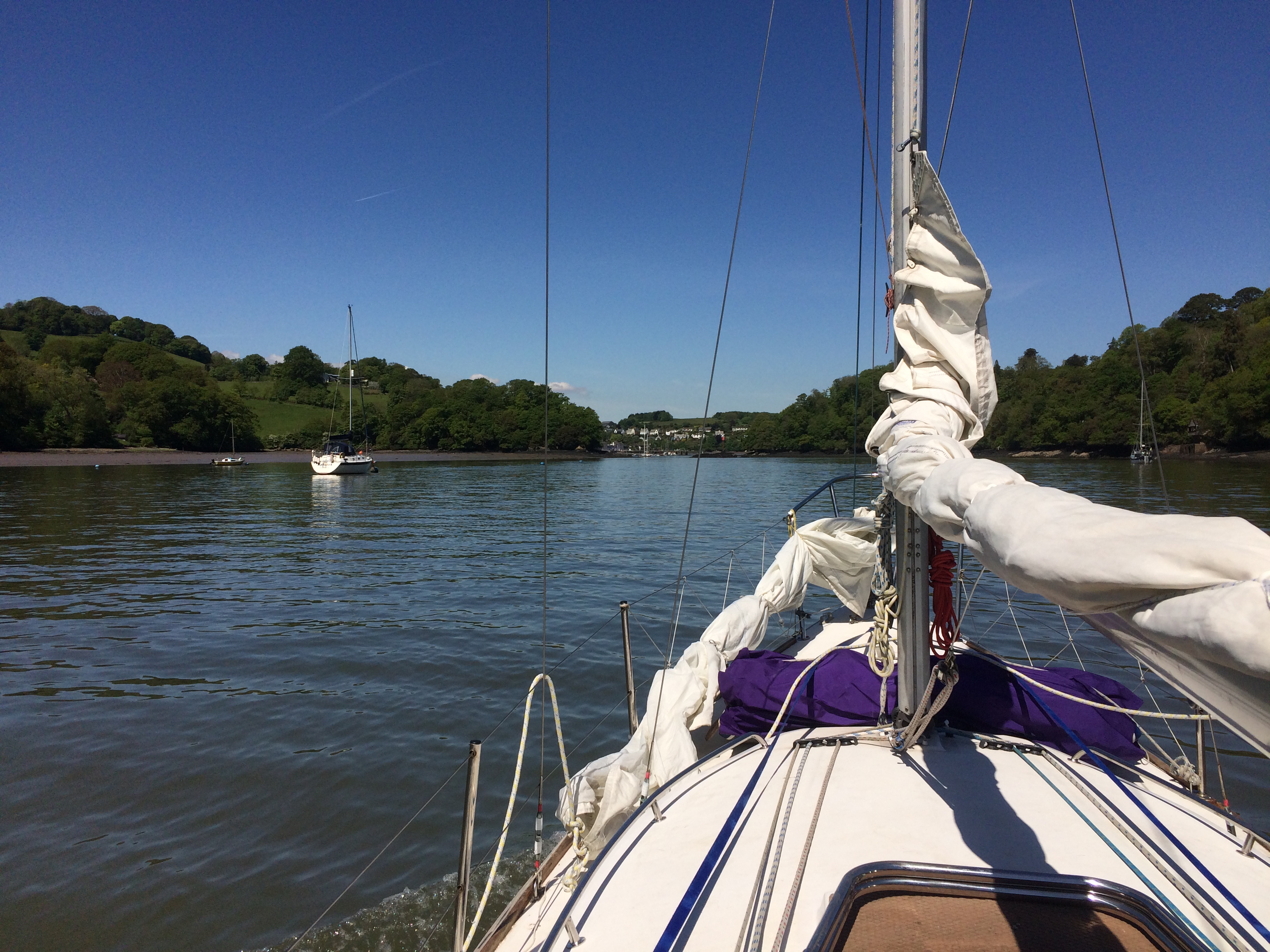 The race runs from the start at Lands End Hard, down river to Warsash and then back up to finish off the Jolly Sailor in Bursledon pool.
The race runs from the start at Lands End Hard, down river to Warsash and then back up to finish off the Jolly Sailor in Bursledon pool.It's a great race for kids, here on the final stretch I'm being overhauled by this 9 year old and her dad in a mirror dinghy.
 The theme for this year's regatta was Pirates of the Caribbean, and up at the Elephant Boatyard, the preparations included an island backdrop and pirate tavern.
The theme for this year's regatta was Pirates of the Caribbean, and up at the Elephant Boatyard, the preparations included an island backdrop and pirate tavern. A goodly contingent of local pirates also turned out to watch the afternoon fun!
A goodly contingent of local pirates also turned out to watch the afternoon fun! The Solent Old Gaffers Association were celebrating their 50th anniversary of the first race which also ran from the Elephant boatyard, these lovely old craft, several around 100 years old made a spectacular sight, along with other classic local boats.
The Solent Old Gaffers Association were celebrating their 50th anniversary of the first race which also ran from the Elephant boatyard, these lovely old craft, several around 100 years old made a spectacular sight, along with other classic local boats. A pirate event, wouldn't be complete without a pirate ship and of course there were several, this fine example is a replica of a 17th century ship of the line, with fully detailed and complete working sail.
A pirate event, wouldn't be complete without a pirate ship and of course there were several, this fine example is a replica of a 17th century ship of the line, with fully detailed and complete working sail.

 If you’ve seen the film or read the book, “Treasure Island” is a great story, but for a sequel, track down Bjorn Larsson’s book “Long John Silver”. The Swedish author has captured the character of Long John Silver and produced a book which chronicles his life and character both before and after Treasure Island, his journey through the often savage times and circumstances, which led him into to piracy.
If you’ve seen the film or read the book, “Treasure Island” is a great story, but for a sequel, track down Bjorn Larsson’s book “Long John Silver”. The Swedish author has captured the character of Long John Silver and produced a book which chronicles his life and character both before and after Treasure Island, his journey through the often savage times and circumstances, which led him into to piracy.









 This morning six days out
This morning six days out 









 The evening event kicks off with a torch lit dinghy parade, hog roast and music, followed by fireworks.
The evening event kicks off with a torch lit dinghy parade, hog roast and music, followed by fireworks. 
































